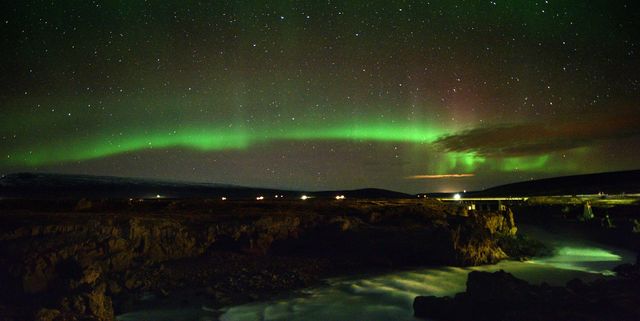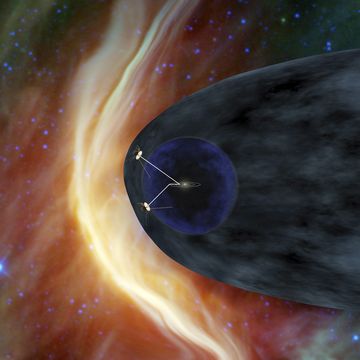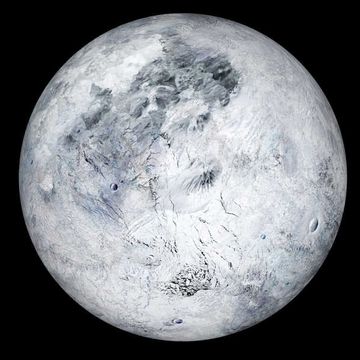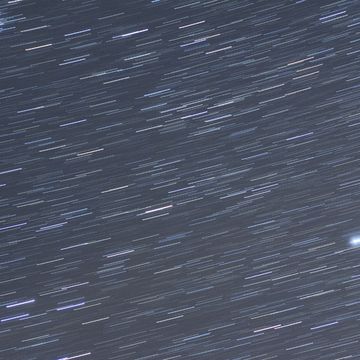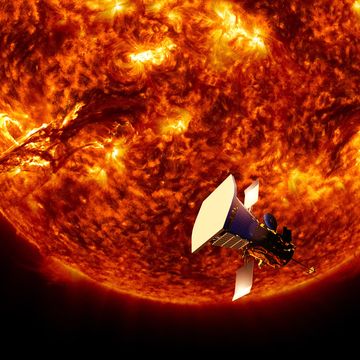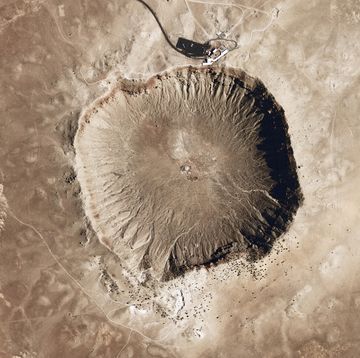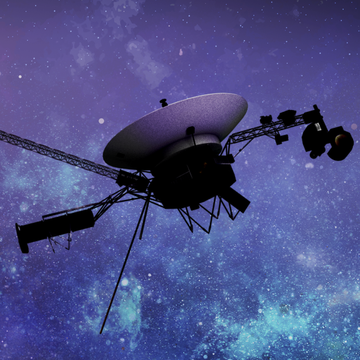They're among the most stunning natural wonders in the world, and unlike, say, the Grand Canyon, the Northern Lights aren't constant. Auroras are hyperbolic in their beauty, injecting levels of color into the night sky that feel straight out of works of fiction. But what are they, exactly?
It's still something of a mystery. Which is astonishing, considering how long humanity has been aware of their existence. Many northern cultures, from Finnish to Inuit, have traditions and myths based on auroras. In Northern Sami culture, which extends through Finland, Sweden, and Norway, auroras are seen as the souls of past ancestors. For Nunatsiavut tribes in Canada, auroras guide their loved ones to heaven.
Auroras don't just occur up north. They've been seen in Japan and China, where the oldest known aurora was depicted in 2600 B.C. Galileo Galilei, the legendary Italian astronomer, coined the term "aurora borealis" in 1619 after Aurora, the Roman goddess of morning, and historians now believe that in 1640 in Chile, before a war with the invading Spanish, the Mapuche people saw a "battle in the sky" that was an aurora.
For as many cultures there have been, there have been nearly as many explanations of auroras and how they work.
What Causes the Northern Lights?
Even though auroras are most visible at night, their existence is owed to the sun. By giving off tremendous amounts of light and heat, the sun allows all life on Earth to exist. But that's not all the sun gives off.
"Of course, a game changing point was when we started space exploration," says Beatriz Gallardo-Lacourt, a Postdoctoral Program Fellow at NASA's Goddard Space Flight Center, speaking to Popular Mechanics. Gallardo-Lacourt has spent years studying auroras and related phenomena.
The sun also sends streams of charged particles from its upper atmosphere into the great void of space. These particles are simple, mainly comprised of protons, electrons, and ions. These streams, which vary in speed, temperature, and density, are known as solar wind. Some of that solar wind heads towards Earth.
When they're heading towards Earth, they run into the planet's magnetosphere. A magnetosphere is a region of space surrounding a planet where the planet's magnetic field reigns supreme, as opposed to the magnetic fields of interplanetary space. "One of the amazing things about magnetic fields is that they can trap particles," says Gallardo-Lacourt.
Once the magnetosphere has trapped particles from solar wind, the particles start to change. On the side of the Earth facing the sun, they compress, and in the night sky they energize and stretch. These stretching, energized particles go where the Earth's magnetic field sends them. Following the patterns of the magnetic field, the energized electrons flow towards the Earth's poles.
The ions and electrons in these particles are in constant motion, what Gallardo-Lacourt describes as "bouncing."
Where Does The Color Come From?
It's important to recognize what a journey these particles have traveled. They've escaped the gravity of the sun with their high energy and have voyaged millions of miles away from their home through the vastness of space. Where they've ended up, Earth, couldn't be more foreign. While the electrons may not be able to recognize the plants or animals, they're deeply affected by the Earth's atmosphere. Specifically, how dense it is compared to where they've been.
"The closer they bounce to earth," Gallardo-Lacourt says, "the atmosphere is more dense. Extremely dense compared to outer space."
That density weighs on the electrons, which leads to collisions with neutral atoms. When electrons hit these neutral atoms, the atoms become energized. "The neutral atom would like to release that energy," Dr. Gallardo-Lacourt says, "and they release that energy photons. They produce light, which are the colors we see."
The colors vary with what atoms are hitting the electrons. But since they're in the sky, the main element they're hitting is oxygen. Oxygen energy photons produce green and red lights, depending on their placement in the atmosphere. Th "green line" is 557 kilometers up (approximately 346 miles) and the "red line" is even higher, at 630 km (391 miles).
Where Are the Best Places To See the Northern Lights?
Luckily, solar wind doesn't understand borders. Auroras take place all over the world. Not having any light pollution helps, and a clear sky expands their chance to be seen. Rural towns in Finland like Harriniva and Kilpisjärvi are solid bets, especially traveling in early spring or autumn.
There's also Tromsø, Norway, which brags on its tourism site that it holds the highest probability of seeing the northern lights in the world. There tons of aurora-centric adventures in Tromsø, including tracking down the auroras in a 4WD truck.
While it doesn't have the same northern ring as Nordic countries, Scotland also gets its fair share of auroras during the winter. Known as ‘Mirrie Dancers,’ auroras can be seen in regions like Aberdeenshire, the Isle of Skye, and even near Glasgow if they're strong. Galloway Forest Park, the U.K.'s first Dark Sky park, is also a promising option.
While auroras have been seen all over the U.S., including the desert Four Corners region of Utah, Colorado, New Mexico, and Arizona, it's hard to beat Alaska. Fairbanks offers an aurora season, from August through April, including an aurora tracker that can help determine the odds of catching one.
Why Aren't There Northern Lights All the Time?
Solar wind hits the Earth regularly, but nobody knows for sure though they do occur most commonly during a period known as solar maximum, the most intense phase of the 11-year solar or sunspot cycle.
Scientists like Gallardo-Lacourt are also studying Earthbound phenomena that are similar to auroras known as STEVEs. They're "imposters," she laughs.
Lights have been providing some of the best shows on the planet for thousands of years, and their mysteries are still alluring to scientists.
David Grossman is a staff writer for PopularMechanics.com. He's previously written for The Verge, Rolling Stone, The New Republic and several other publications. He's based out of Brooklyn.
